One of the most common questions that we get asked is can you apply ceramic coating to the non-skid. The answer to that question is yes. There are a few things that we want to keep in mind.
Products used:
- ALPHA Graphene Ceramic Coating
- Marine Ceramic Coating
- Ceramic Application Sponges
- Premium Microfiber Towels
Video Transcript
Christian Westhorpe:
Christian Westhorpe here with Glidecoat and today we're going to be talking about applying the ceramic coating to the non-skid surfaces. One of the most common questions that we get asked is "can you apply ceramic coating to the non-skid?" The answer to that question is yes. There are a few things that we want to keep in mind though, when we're applying the ceramic coating to that type of surface.
That surface is designed on a boat to be anti-slip, hence the name, non-skid. So when the surface gets wet, typically, whether diamond cut or sandpaper style non-skid the water is designed to kind of lay flat on the surface. When we're applying the ceramic coating, what that's going to do is make the non-skid hydrophobic. So instead of lying flat, the water is going to bead up. This makes it much easier to keep the surface clean, reducing the need to have to use harsh chemicals or scrub the surface too much. But naturally, when it's wet and the water is beading up on it, it will be a little bit more slippery.
So one of the things that we do, when I'm applying the ceramic coating to the flat gel coat surfaces, I'm always applying two coats of ceramic coating. And that's to kind of, one - get that base layer and fill in the deep pores and then that second coat makes sure that the surface is completely sealed and gives that extra gloss and added protection.
Our recommendation when doing the non-skid and applying the ceramic coating to that surface, as opposed to doing two coats, we typically recommend doing one layer. And the reason for that is - the one coat is going to fill in those deep pores of the surface of the non-skid, make it hydrophobic, make it easier to clean, but it's not going to dramatically alter the slickness or the feel of the surface. Can you apply multiple layers? Yes, but each additional coat that you're going to apply to the surface is ultimately going to make it a little bit more slippery, even when the surface is dry. So, one coat is that happy medium of not changing the feel of the non skid when it's dry, giving you the hydrophobics, but not making it too slick even when it's wet and making it much easier to clean.
When we're applying the coating, whether it be our Alpha Graphene or our Marine Ceramic Coating to the non-skid, we're going to apply it in the same way as we normally would - applying, you know, ten drops or so on to the sponge, working in a three foot by three foot section and applying it up and down side-to-side, make sure the area is fully covered and then buffing it in by hand with a microfiber cloth.
Now again, one of the things we're going to do when we're working on the non-skid, that's always going to be the last part of the boat that we're applying the coating to. So I'm going to make sure I've got all my flat surfaces done and then I'm going to kind of work my way off the boat when I'm applying the coating because I don't want to step on other areas that have been freshly coated on the floor, once I've just put the coating on there. So I'm going to kind of start here, work my way back like I'm you know, painting somewhere and working my way off the boat so that I don't touch it and allowing that 24 hours full cure time before you get back on the boat and are stepping on it.


